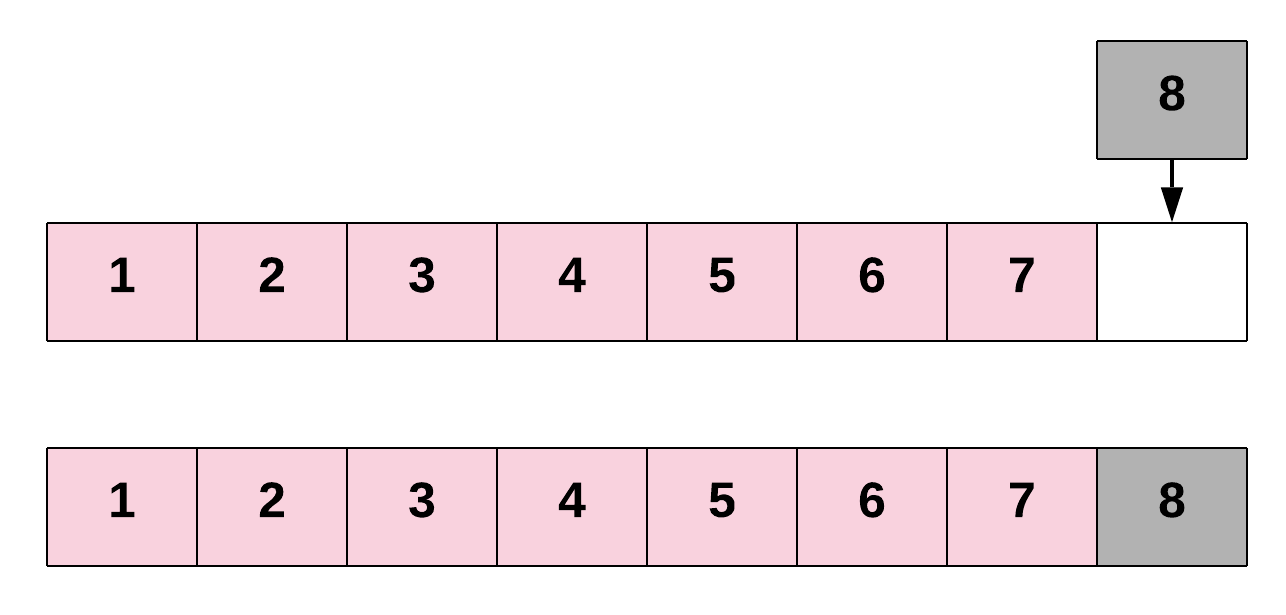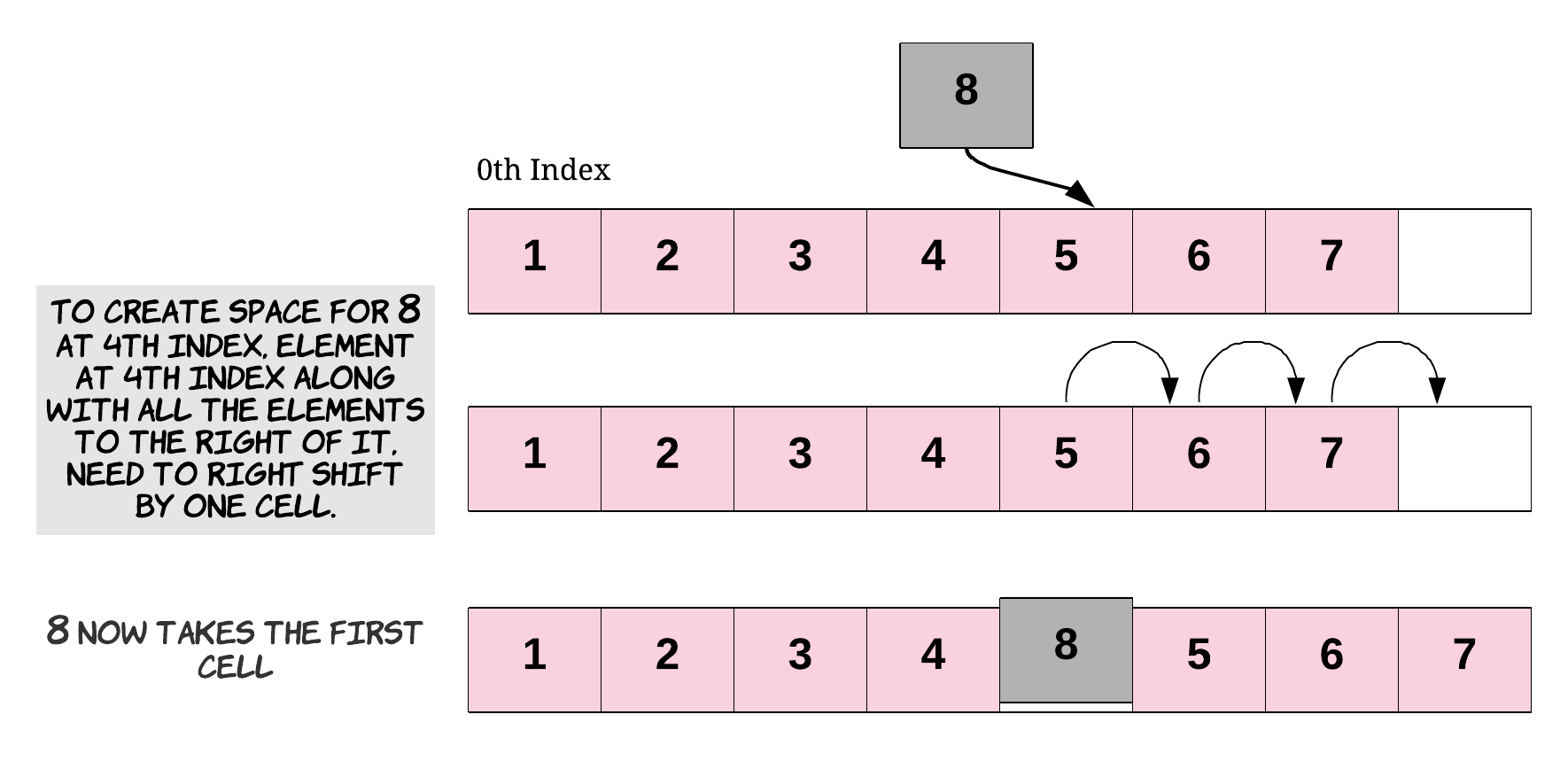Vectors and Grids

One of the simplest Data structure that are linear are vectors or arrays. They form a continuous collection of data that share the same Type. All the programming languages offers a direct mechanism to declare and manipulate them. They are the first but most important Data structure that a serious programmer should master in his long journey.
Static vectors
In the first part, we will introduce the notion of a static vector in C++.
DVD Collection
Let’s suppose that we have a set of DVD’s and we want to store them ( in a compact way).
What will be our choice for storing them?
- We can find a big shell to store all the possible DVD?
- The problem arise when we want to add or remove one of them.
- Another consideration is the size of the shell. Do we go for the just the number of DVD that we have and sacrifice the possibility of adding other.
- Or we can buy a bigger shell, but we will sacrifice money as we don’t always need all the empty spaces.
-
Also we remark in a DVD, we have the following invariants:
- Each DVD has its own cover.
- The cover always shows the title and the cast.
- All the covers has the same size.

Now suppose that we want to write our application to store and manipulate our inventory of DVDs. We have to choose the attributes to represent our DVD. We must also choose the maximal number of DVD that we could store.
This number is so important because in static vectors, it must be known in the Declaration phase and never change in the program.
The ideal structure to store those DVD is a raw vector or array.
Array Definition.
An array is a collection of objects. Those objects must share the same type. Also in the memory view, those items are stored in a contiguous way. This will allow a random access to each element in a constant time.
Here is a simple example that show how to declare a static array with a known size.
//Declaring an array of size 15
int vec[15];
//We could also read N , but once we declare the array,
// the size never changes.
int N;
cout<<"Donner la taille: "
cin>>N
float vec2[N];
And now we, could apply these declaration to our problem of DVDs.
#include <iostream>
#include <string>
using namespace std;
// Structure of a DVD
struct DVD
{
string name;
string director;
int year;
};
int main(int argc, char *argv[])
{
//Store a line for a dvd
string line;
//Getting the number of dvds
int N;
getline(cin, line);
N = stoi(line);
//Array of dvd
DVD inventory[N];
for(int i=0; i<N; i++)
{
getline(cin, line);
inventory[i] = from_line(line);
}
for(auto dvd: inventory)
cout<<dvd<<endl;
return 0;
}
Indexing operator
Les deux opérations primitives pour un tableau sont l’écriture et la lecture dans ces composantes. Le reste des opérations est fondé sur ces opérations.
The basic operation given by an array is the ability to write and read any value in the array.
Those operations use the indexing syntax [i] which gives a reference
to the ith elements.
The indices are orered from
0toN-1whereNis the size of the vector.
#Getting access to the first DVD
auto dvd1 = inventory[0];
//Modify its content
inventory[0].year = 2000;
Also to loop all the elements of the array, we could use one of the following for loops
for(int i=0 ; i<N; i++)
//Use inventory[i]
for(auto dvd: inventory)
//Use dvd
for(auto &dvd: inventory)
//Use dvd
length and Capacity
An interesting question arises:
If someone asks you what is the size of your array. What will the answer?
There are two correct responses for that question:
-
The maximal number of elements that the array could store (
capacity). -
The actual number of elements stored in the array (
length).
//An array of capacity 100
int tab[100];
//Adding some elements
tab[0] = 3; //[lenght=1, capacity=100]
tab[1] = 4; //[lenght=2, capacity=100]
tab[2] = 5; //[lenght=3, capacity=100]
Argument to a function
A static (or raw) vectors in C++ don’t know its length nor its capacity. So when passing this array to a function, we must also pass those values too.
An array is simply an address (or pointer) for the first element.
#include <iostream>
using namespace std;
void augment(int grades[], int capacity)
{
// try this with the simple for each loop
for(int i=0; i<capacity; i++)
grades[i]++;
}
int main(int argc, char *argv[])
{
//Array with capacity 5
int grades[5]{14, 16, 18, 10, 20};
//Call with a function
augment(grades, 5);
//Printing
for(auto v: grades)
cout<<v<<" ";
cout<<endl;
return 0;
}
Exercises.
Write a function that gets an array and return the number of elements that has an even number of digits.
Example 1:
Input: nums = [12,345,2,6,7896]
Output: 2
Explications:
12 has 2 digits.
345 has 3 digits.
2 has 1 digits.
6 has 1 digits.
7896 has 4 digits.
Example 2:
Input: nums = [555,901,482,1771]
Output: 1
Explication:
Only 1771 has an even number of digits.
Classic operations on arrays.
Let’s execute some basic operations on an array. If we get back the DVD example, we will need the following operations:
- Add a new DVD to the collection.
- Delete a given DVD.
- Look up for a DVD.
Insertion
Inserting in an array could be done in different positions:
- Insert at the end of the array

bool insert_end(int arr[], int &lenght, int capacity, int value)
{
//Verify if we could insert an element
if( lenght >= capacity)
return false;
else
{
arr[lenght++] = value;
}
}
- Inserting in the front

bool insert_begin(int arr[], int &lenght, int capacity, int value)
{
//Verify if we could insert
if( lenght >= capacity)
return false;
else
{
//Shifting
for(int i = lenght; i>0; i--)
arr[i]= arr[i-1];
//Insert element
arr[0] = value;
//Don't forget to increase the length
lenght++;
}
}
- Insertion in a given position
index.

bool insert_at(int arr[], int &lenght, int capacity, int value, int index)
{
//Verify if we could insert
if( lenght >= capacity)
return false;
else
{
//Shifting
for(int i = lenght; i>index; i--)
arr[i]= arr[i-1];
//Insert element
arr[index] = value;
//Don't forget to increase the length
lenght++;
}
}
Deletion
Deleting an element given by its index consists of shifting all the remaining (
placed at the right) and decrease the actual length.

bool delete_at(int arr[], int &lenght , int index)
{
if( index < 0 || index>= lenght)
return false;
//shift back
for(int i=index; i<lenght-1; i++)
arr[i] = arr[i+1];
//length decreases
lenght--;
//Deletion is successful
return true;
}
Search
Now for the most important operations as its arises in many applications.
Searching for a
targetconsists of returning the index of the first occurrence of this target in the array.
There are several methods to search for an element in a given array. For the time being, we will start with the most basic search which is linear search.
Linear search: start by checking the first element, and then goes to the
second, until its either finds the target or arrives the end of the array.

int linear_search(int arr[], int lenght, int target)
{
//Simple loop
for(int i=0; i<lenght; i++)
if( arr[i] == target)
return i;
//Failure
return -1;
}
Once we will introduce the notion of recurrence, we will go back to this problem for a more efficient solution if the array is sorted ( Stay tuned).
